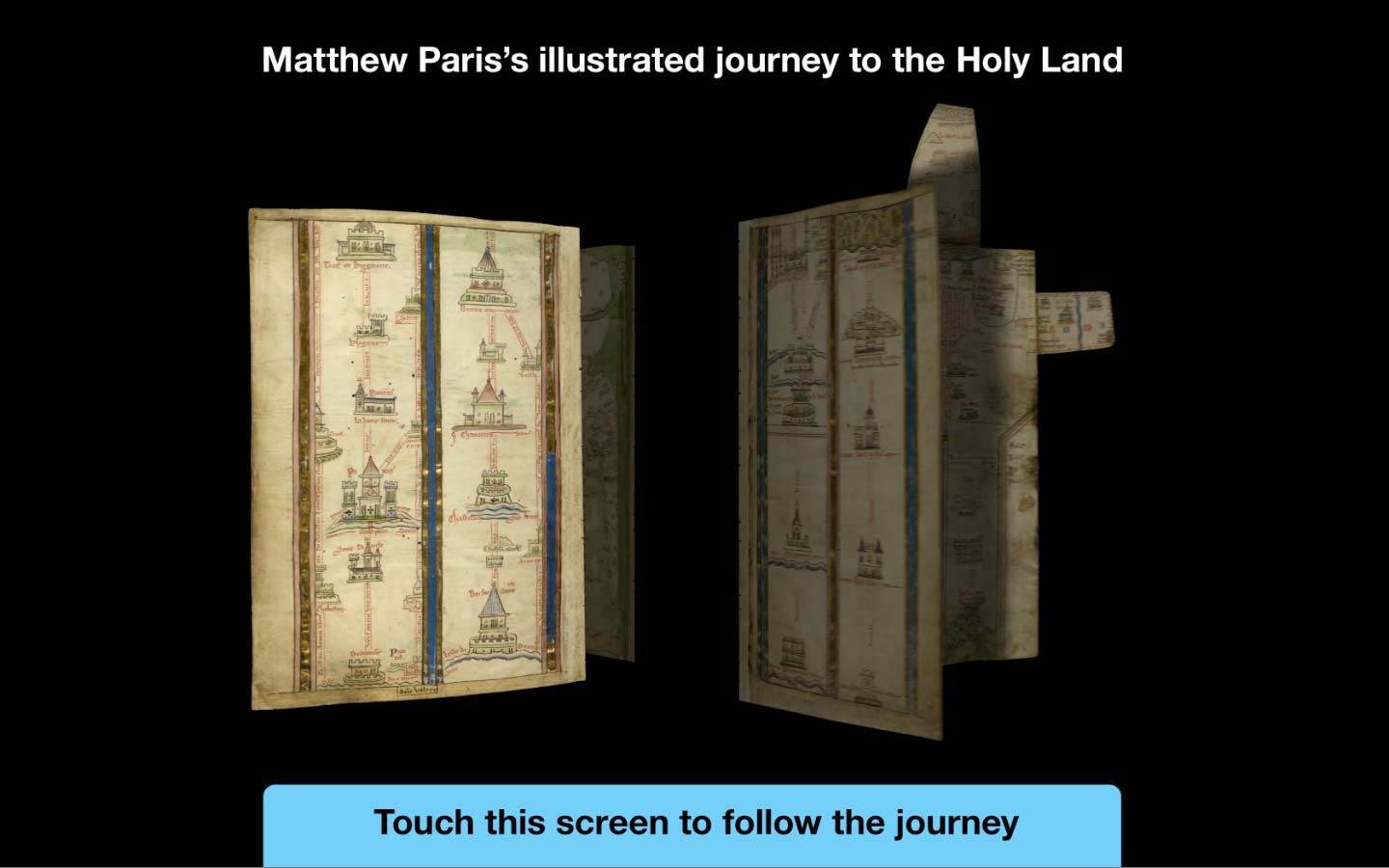Royal Manuscripts: The Genius of Illumination
November 2011
Opened by Her Majesty The Queen, Royal Manuscripts: The Genius of Illumination, showcases the world's largest collection of illuminated royal manuscripts collected by the kings and queens of England for over 800 years.
Working for the British Library, Clay produced two interactives for the exhibition. Both pieces allow visitors to explore the manuscripts in ways not possible in traditional media, enhancing their understanding of the real manuscripts on display.
Matthew Paris's illustrated journey to the Holy LandThis interactive allows visitors to see the pages of the manuscript in the original book context, and then animated in 3D, cut into sections and arranged into the reading order devised by Paris.
Visitors then swipe the touch-screen to travel along the journey themselves. They can stop to read about key points along the journey and find out more about the techniques Paris used. One of the techniques was to attach flaps that 'popped' out to show additional maps, and inspired by this, we digitally 'pop-up' each of the key points on the journey as it is travelled.
In some ways Paris's manuscript is a medieval 'satnav' and we use this idea to give visitors a more familiar and intuitive method of navigating the complex arrangement of the journey drawn on the pages of the manuscript.
In the exhibition, this interactive sits next to the beautiful and fascinating pages of the manuscript. This encourages visitors to see both and gain additional insight into the physical aspects of the manuscript as well as an understanding of how to interpret and 'read' the real object on display in a way that would be hard to achieve using other media.
Royal and Religious IconographyThis interactive, located early in the exhibition, gives visitors the tools to recognise and interpret some of the iconography that appears in the beautiful and detailed manuscripts on display.
The visitor can browse through illuminated pages of manuscript and select images they are most interested in. This is then presented with interpretative text, and more examples of the same iconography that can found in the exhibition.
Individual characters or elements are cut out, and colour is also used to highlight certain elements. Providing visitors with a straightforward 'interpretative toolkit' like this helps engage them on a deeper level with the research and manuscripts presented in the exhibition.
The painting in the exhibition is beautifully rich, detailed, glistening, and occasionally seems almost magical. This interactive aims to enhance that personal experience of the curated collection of objects on display, but also encourage visitors to engage fully with the research, insights, and fascinating stories in the 'label based' content of the exhibition.
